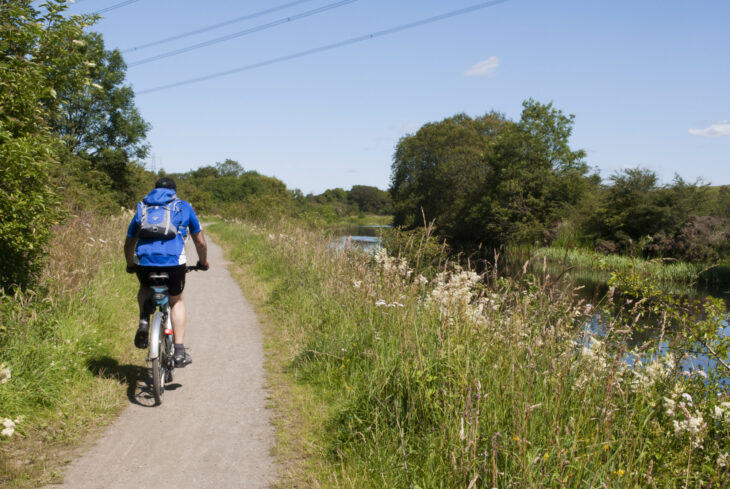What’s stopping the widescale use of nature-based solutions in our towns and cities?
On Solutions Day at COP27 and following on from Biodiversity Day, our Nature Based Solutions Policy Adviser, Rebekah Strong shares an insight into her work on urban nature-based solutions. Asking why, seeing as nature can help us with so many issues, nature-based solutions are not being used more to help our towns and cities mitigate and adapt to climate change.
Nature-based solutions, ways in which we use and work with nature to help us tackle environmental and social challenges, are a growing topic of discussion – with communities, NGOs, financial influencers and government bodies all getting involved in the conversation. However, while there is lots of talk, the action has been less forthcoming.
The virtues of planting trees and restoring peatland are well known and as such are championed and supported by lots of people and organisations, but nature offers so much more by way of solutions, especially where they are desperately needed – in our towns and cities. In the latest report the IPCC stated with high confidence that “in all cities and urban areas, the risk faced by people and assets from hazards associated with climate change has increased”. Nature can help us deal with many of the problems we are facing as a result of climate change, as well as alleviating social problems such as ill health and loneliness. A great example is the restoration of Braid Burn in Edinburgh, where a section of the river was re-meandered and a wetland habitat has been created to help reduce the impact of flooding further downstream, this also improved biodiversity and made the area a more pleasant place for people.

At the Scottish Wildlife Trust, we have called for greater space for nature and access to nature in our urban environments for a long time. We have worked with local governments, communities and like-minded organisations to develop the Edinburgh Nature Network and Cumbernauld Living Landscapes. Edinburgh’s Nature Network identified the areas where nature could make the biggest impact on peoples’ lives, helping focus efforts. So, we have the data, we have the demand, we have the ideas, but why don’t we have the action? What’s stopping the widescale use of nature-based solutions in our towns and cities?
To find out more I have been investigating the barriers to the wider roll-out of nature-based solutions in the urban environment. Systematic governance barriers are significant, there is a general lack of understanding, communication and collaboration issues and financial gaps. These strategic barriers are not unique to this area of change, but there are nuances.
I wanted to delve further into this and ask those working on the ground what it was like to develop nature-based solution projects. I spoke to city council staff, charities, community group members, developers, and other important actors. From my conversations it is obvious there is a lot of positivity around nature-based solutions, but also frustration and confusion. The initial responses and existing research will hopefully spur further discussions and bring to light possible ways forward, making it easier to use nature to help solve our problems. My conclusions so far are a steppingstone to these wider discussions and hopefully some concrete asks that we can take to Scottish Government to drive the change needed.
The report is available to download on our website. If you would like to share your thoughts, please email naturebasedsolutions@scottishwildlifetrust.org.uk.
Help protect Scotland’s wildlife
Our work to save Scotland’s wildlife is made possible thanks to the generosity of our members and supporters.
Join today from just £3 a month to help protect the species you love.
Preface
On Solutions Day at COP27 and following on from Biodiversity Day, our Nature Based Solutions Policy Adviser, Rebekah Strong shares an insight into her work on urban nature-based solutions. Asking …
